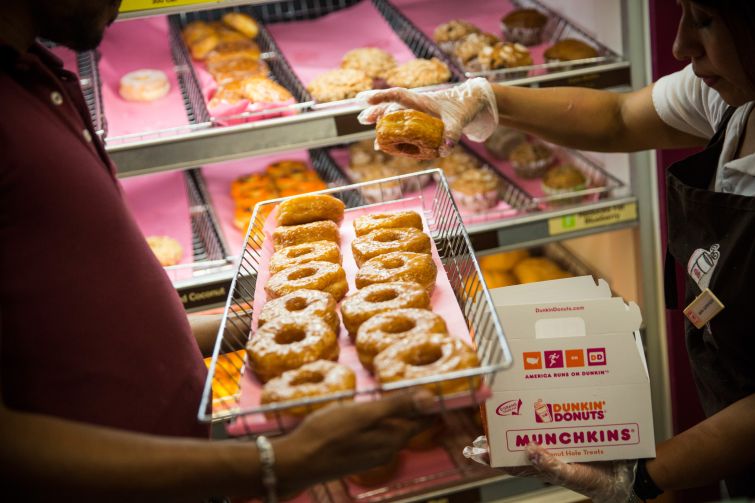Dunkin’ Loses NYC Stores for First Time in Years as Chains Shutter in Droves
By Nicholas Rizzi December 23, 2020 12:29 pm
reprints
New York City has fewer Dunkin’ outposts at the end of the year for the first time in well over a decade, after the coronavirus pandemic battered the retail market and led one in seven national chains to shutter around the city this year, a report from the Center for an Urban Future (CUF) found.
CUF’s annual “State of the Chains” report released Wednesday showed that Dunkin’ — the largest chain in the city, which has expanded rapidly in recent years — lost 18 stores in 2020 compared to last year. It’s the first time Dunkin’ posted a year-over-year decline since CUF started tracking chain closures 13 years ago.
“It’s the perfect snapshot of the problem,” Jonathan Bowles, executive director of CUF, said. “The fact that even Dunkin’ is shutting down stores — more than a dozen of them — shows how difficult an economic climate it is for retailers.”
“It’s a good example because a lot of people stop at Dunkin’ on their way to work, going to the subway, taking their kids to school, heading to the office, and a lot of those things are just not happening,” Bowles added.
Dunkin’ is far from the only chain to experience declines in their footprint compared to 2019, as the coronavirus pandemic emptied offices and confined shoppers to their homes. The number of chains dropped by a record 13.3 percent compared to last year, shooting past the previous record of 3.7 percent in 2019, according to the report.
Manhattan was hit the hardest with a 17.4 percent loss of chains, with Midtown having the largest drop in any zip code around the city with 34 chains closing. Every borough faced at least an 8.5 percent decline in the number of chains.
“Clearly, we’re seeing an impact from the big plunge in office workers,” Bowles said. “People are no longer dining out for lunch at chain eateries, they’re not going after work to a retail shop, and, obviously, Manhattan is also hurt by the drop in tourists.”
Bowles added that while national chains have had to close up shop in record numbers during the pandemic, he expects the impact on mom-and-pop stores to be much greater.
“If it’s this bad for chains, I can’t even imagine the distress that mom-and-pops are facing right now,” he said. “It’s probably at least double, if not more, the closures among mom-and-pops, because they don’t have the deep pockets [like chains].”
For the first decade of CUF’s report, the number of national chains kept increasing in New York City, but that started to change as competition from e-commerce put pressure on brick-and-mortar retail. The report found declines in chains for the past three years: 0.3 percent in 2018, and 3.7 percent in 2019.
Even as other chains dropped locations in recent years, Dunkin’ bucked the trend and became one of the largest retail presences in the five boroughs. It grew by 21 percent from 2012 to 2019, and had plans to continue expanding and open another 1,000 locations nationwide by 2021.
While Dunkin’ has faced its first decline in years, it’s still far and away the biggest chain in the city with 618 locations, way ahead of the second-largest, Metro by T-Mobile, which has 334 stores, according to CUF.
And Dunkin’ is far from the only chain with a major presence to drop locations this year. Metro by T-Mobile closed 134 stores, Starbucks closed 49, and Duane Reade closed 70.
Few chains increased their presence in 2020 compared to last year — including Popeye’s and T-Mobile, which both opened 11 more stores — and Bowles said most of those expansions were pre-pandemic.
Bowles added that there’s plenty of temporary chain store closures on the list and that, coupled with an expected return to the office once the COVID-19 vaccine rolls out, means the city could see a “pretty significant increase” in the number of chains next year. And the scores of storefronts vacated by chains could provide opportunities for new retailers to open up instead.
“For years, we just didn’t see landlords lowering rents to a level that got independent retailers back in the game in a big way,” Bowles said. “I wonder if there’s a real opening for new independent retailers to get their foot in the door.”


